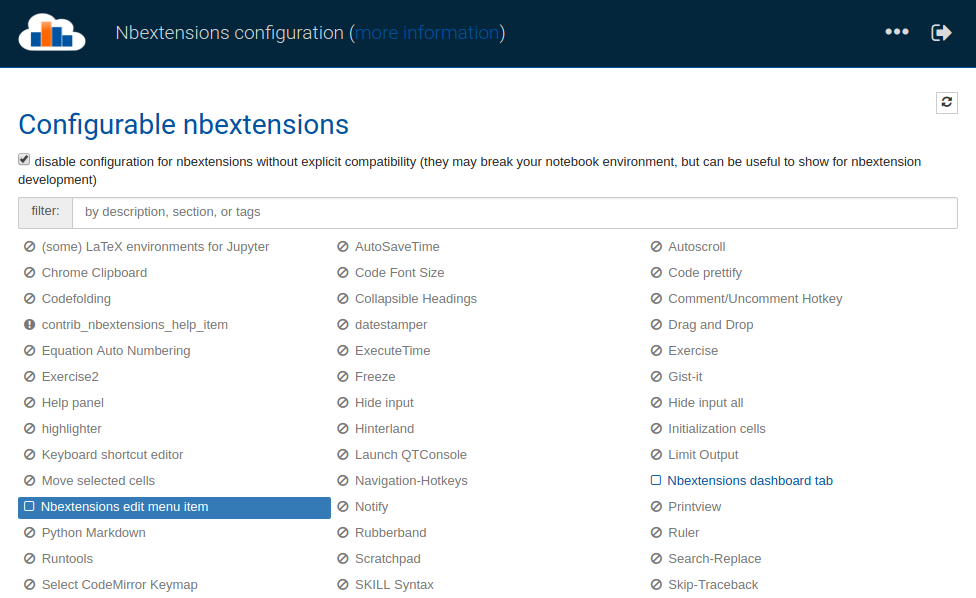

This Jupyterlab extension features the variables currently in use and displays their values.

It is available as a button in the panel menu.įor more information, click here.
How to install jupyter notebook extensions code#
This extension allows one to turn off and on line numbers in code cells. Jupyter nbextension enable jupyter-autopep8-master/jupyter-autopep8įor more information, click here. The extension can be installed using the following code: The extension also points out basic syntax errors. Once the pip install autopep8 package is installed, the Autopep8 extension provides a toolbar button and a keyboard shortcut for reformatting the code-cell. The PEP8 formatter for Jupyter notebook uses the autopep8 Python module to reformat Python code to conform to the PEP8 style guide. This extension reformats or prettifies code in a notebook’s code cell.
How to install jupyter notebook extensions update#
It features non-blocking execution display modes such as external, inline and JupyterLab Hot reloading (ability to automatically update a web application when changes are made to the application’s code) error reporting Jupyter Proxy Detection and Dash enterprise workspaces.įor more information, click here. This library makes it easy to build Dash apps from Jupyter environments– classic Notebook, JupyterLab, Visual Studio Code notebooks, P圜harm notebooks. While there are 99 ways in which a developer can extend the Jupyter ecosystem, we have earlier listed eight extensions, and today we list an additional 10 extensions: Jupyter Dash Jupyter Notebook comes with extensions or add-ons that broaden the functionality of the application. This was up from two lakh or so public Jupyter Notebooks in 2015. According to popular code-sharing site GitHub, more than 2.5 million public Jupyter Notebooks were available as of September 2018.


 0 kommentar(er)
0 kommentar(er)
